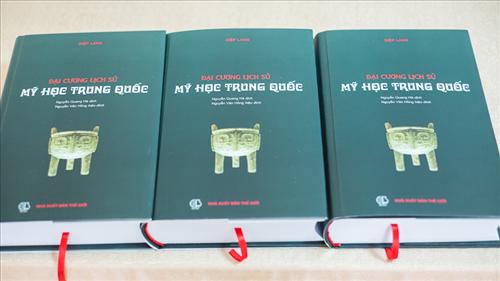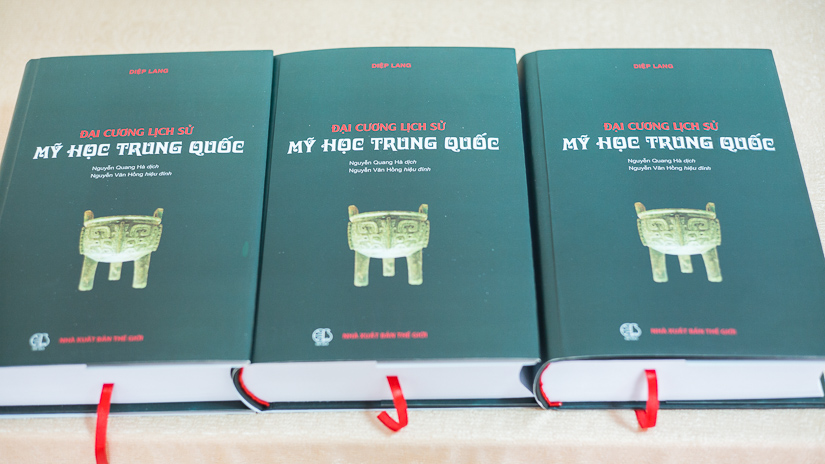
The history of Chinese literature and art has many achievements, but perhaps the thousands of years of history from the pre-Qin period to the Han, Tang, Song, Yuan, Ming, and Qing dynasties is the history that has left behind many works and academics. Professor Diep Lang has distilled and selected many documents on different fields such as: Literature, history, art, painting, sculpture, architecture... providing readers with many reliable documents. Although it must delve into the history of Chinese culture, literature, and art, the book still focuses on two main aesthetic directions;

Cover of the book "Outline of the History of Chinese Aesthetics" (Photo: Jackie Chan)
The first direction: This is the elaborate direction that China calls the direction of beauty “golden engraving and drawing lines” and the direction of artistic expression according to the natural, simple, rustic but still profound and meaningful cable of beauty. Chinese aesthetics calls it exploiting beauty in the style of “newly sprouted hibiscus”, naturally lovely. According to the first direction, the author pays attention to the Chu state design, Chu poems, Han fu, parallel prose of the Six Dynasties, Tang poetry, Ming-Qing pottery, female costumes of Peking opera… the author believes that all are created in the style of “golden engraving and drawing lines”, “dazzling carving”…
Second direction: Aesthetic direction influenced by Wei-Jin, Six Dynasties. Even bronze objects of Han Dynasty, calligraphy of Wang Xizhi, paintings of Gu Qizhi, porcelain of Song Dynasty and even poetry of Tao Qian all follow natural beauty without elaborate carving. Author Diep Lang believes that: Chinese aesthetics also has another fundamental problem of "illusion" and "reality". Chinese aesthetics believes that: From life, art creates images and images always have two sides: the "real" side is close to the life being reflected and the "illusion" side is the "divine world" created by the artist's talent. A work that follows life too closely is a copy. On the contrary, if it imagines too much fantasy, far from life, it easily becomes a fabrication. Therefore, Chinese aesthetics requires artists to combine "illusion" and "reality" so that readers can blend with the image, then it can be considered a worthy work. Therefore, Chinese aesthetics easily creates the phenomenon of “White Space”. When Qi Baishi drew horses, he only drew one angle, and when he drew shrimps and crabs, he always drew one angle. It is these white spaces that create the “Divine World” of the viewer.
In summary, the book:History of Chinese Aestheticsby Professor Diep Lang is a very necessary book for comparing Vietnamese aesthetics and at the same time it also suggests to Vietnamese cultural and artistic people how to create unique works of art. The book also helps researchers and teachers of aesthetics in Vietnam to study Chinese aesthetics throughout history but is summarized and elaborately interpreted in this work.
Author:Assoc. Prof. Dr. Do Van Khang
Newer news
Older news